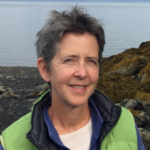Saltwater Inc. was founded in Anchorage, Alaska over 30 years ago on the belief that the health of our fisheries and oceans is one of the critical issues of our time. This belief has deepened with the accelerating impact of climate change coupled with increased global demand for seafood. Saltwater’s part in meeting these challenges is to provide high-quality data that supports sustainable fisheries and healthy oceans. We work with fishermen, fishery managers, NGOs and other stakeholders to find the best, most efficient ways to collect that data. Wherever we work, our approach to is to collaborate, innovate and above all, be practical.
Saltwater Intelligent Monitoring (SWIM) EM Systems
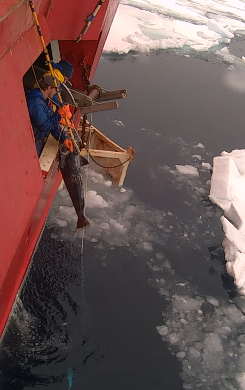
Saltwater entered the EM realm as one of the leading observer providers in North America, with over 100 professional biologists logging thousands of seadays aboard commercial fishing vessels every year. This experience — and in-depth understanding of fishery monitoring and policy — provided the background and ballast for our EM program. In 2012, Alaskan fishermen faced new monitoring regulations that required smaller vessels to carry onboard observers for the first time. From our many years deploying observers in Alaska, we understood first-hand the challenges that fishermen and observers would face on smaller boats in terms of both safety and logistics. We saw that EM offered an alternative that would carry less liability and greater convenience, leading us to partner with the North Pacific Fishermen’s Association (NPFA), to design and pilot EM systems in Alaska’s fixed gear fisheries. These were the first EM systems to include digital cameras, and the first to use motion sensors to detect activity on deck.
Open Oceans
One of the things that distinguishes Saltwater is our commitment to using open-source software tools as the foundation of our EM efforts. We believe open-source code encourages innovation and collaboration, and ultimately this translates into efficiency and cost savings for our clients.
Recognizing the benefits of open- source software for government agencies, the National Fish and Wildlife Foundation (NFWF) and NOAA-Fisheries supported the development of OpenOceans(O2), our shipboard software, and O2Review which were developed collaboratively by Saltwater, Chordata and Sea State. Both software platforms are designed to be adaptable to different fisheries, gear types, hardware platforms and data requirements. O2 logs and processes GPS, sensor, and video data into usable EM datasets. It is hardware “agnostic,” meaning it can work on pretty much any computer that has enough power to run it. For data loggers and systems with only two or three cameras, this can be as simple as an inexpensive single board computer.
O2Review uses structured data entry forms that are tailored to meet the data requirements of each fishery and monitoring program. This includes a customized drop-down pick list of species encountered in a particular fishery that simplifies data entry, saving time and ensuring accuracy. O2Review can be used to read data from different EM systems, which benefits end users working with multiple providers. It is currently being used by various NOAA-Fisheries regional offices, NGOs, and industry partners in the U.S. and abroad.
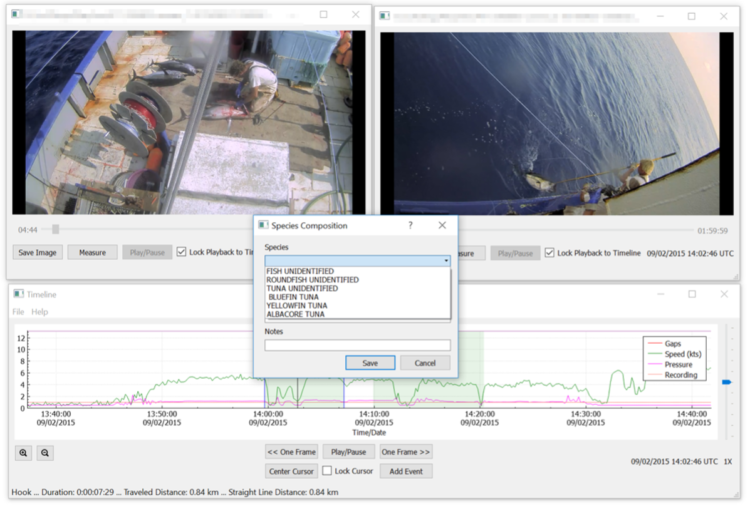
O2 and O2Review were designed to allow for integration of AI tools to improve review efficiency. For example, Saltwater currently uses tool to detect people on deck to target review for compliance with bycatch retention requirements between hauls in the Gulf of Alaska pollock fishery. Our shipboard system uses computer vision to detect issues that affect image quality, such as focus, water on the lens, or loss of contrast. We are currently collaborating on various additional AI projects with The Nature Conservancy, NOAA Fisheries, Mote Marine Labs and the Environmental Defense Fund’s Smart Boat Initiative, and we welcome opportunities to collaborate with other developers and integrate other tools that create review efficiencies.
Data Quality, Use & Access
EM presents an enormous opportunity to improve monitoring and collect data necessary to protect and conserve our marine resources. EM can now be used to collect fisheries data from vessels whether they are fishing for 40 days or on short daytrips and the data can have many valuable uses, from fishery management to spatial analysis of catch and bycatch to supporting industry traceability and sustainability claims. Yet to reach a future where EM data is fully integrated with other fishery-dependent data requires careful thought about what data is being collected, how it is best collected, who owns it, who has access and over what time period, and the trade-offs between data quality, timeliness, and cost. These issues are of critical importance for EM programs because they determine the quality, consistency, and usefulness of EM data, as well as the cost of collecting and managing it. Saltwater, in collaboration with Chordata, is currently engaged in two projects that address these questions.
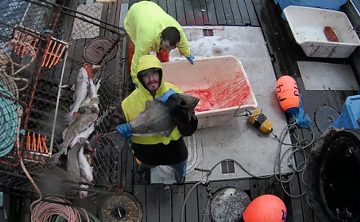
With the support of the NFWF and NOAA Fisheries, we are currently carrying out a project in Alaska’s fixed gear fisheries that is focused on EM data quality and cost. Specifically, the project is examining the integration of EM data with observer data, and trade-offs in how EM data is collected and reviewed that affect costs. We are working with current and potential EM data users (fishery managers, enforcement, stock assessment scientists, industry) to understand if, and how, they use EM data and how it could best complement, integrate with, or replace more traditional data streams—including observer, port sampler, logbook, and fish ticket data.
We are also collaborating with the Aleutians East Borough (AEB) and the Peninsula Fishermen’s Coalition on a project to design and test a “Fishermen’s Data Portal”—a unique data ownership, use and access strategy for digital fisheries data. The participating vessels are pollock trawlers fishing from some of the most remote ports of Alaska. In this fishery, salmon is a prohibited species and NOAA Fisheries sets a “hard cap” on bycatch. If the salmon cap is exceeded, managers close the fishery—which is the last thing fishermen want to have happen.
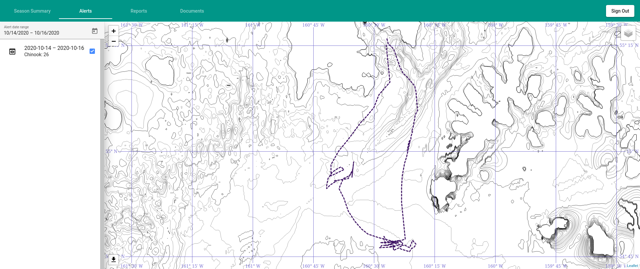
To provide timely in-season information to fishermen, we have developed a data portal, so fishermen have the information they need to improve their operational decision-making and avoid bycatch. With support from The Net Gains Alliance, we have developed software and a “kiosk” for data uploading that is being tested in three Western Alaskan processing plants. Fishermen upload their eLog and EM data via the kiosk to a web portal that is designed to allow secure access by individual fishermen, processors, NOAA-Fisheries and Saltwater. The portal includes direct and timely access to a range of data products: logbook summaries, EM reviewer feedback memos, landing report data, and mapping of areas with high salmon bycatch. Having timely access to this data will provide significant benefits to this fleet, processors, and NOAA Fisheries, and hopefully lead to overall reductions in salmon bycatch.
The need for quality fisheries and oceans data and has never been greater. Thankfully, emerging technologies have made it feasible to meet that growing need, and EM is proving to be an invaluable part of the response. As an EM provider, Saltwater is committed to continually pursuing the most cost-effective ways to collect, interpret, integrate and share that data to maximize its utility and its benefits.
***
Industry Focus highlights private-sector innovators in the #EM4Fish world. The author is happy to hear from readers and can be reached here. To feature your company, please drop us a line at info@em4.fish. You’ll find more Industry Focus profiles in our Blog section.

